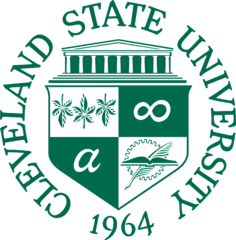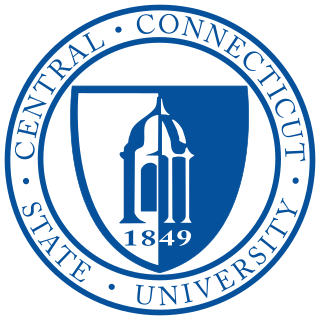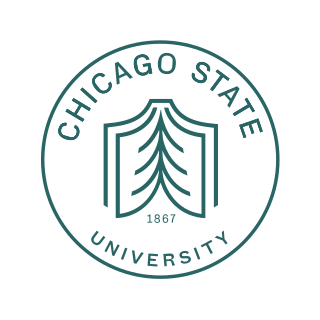
The California State University is a public university system in California, and the largest public university system in the United States. It consists of 23 campuses and 7 off-campus centers, which together enroll 457,992 students and employ 56,256 faculty and staff members. In California, it is one of the three public higher education systems, along with the University of California and the California Community Colleges systems. The CSU system is officially incorporated as The Trustees of the California State University, and is headquartered in Long Beach, California.

The Universities of Wisconsin is a university system of public universities in the U.S. state of Wisconsin. It is one of the largest public higher-education systems in the country, enrolling more than 160,000 students each year and employing approximately 41,000 faculty and staff statewide. The system is headquartered in the state capital of Madison.

Cleveland State University (CSU) is a public research university in Cleveland, Ohio. It was established in 1964 and opened for classes in 1965 after acquiring the entirety of Fenn College, a private school that had been in operation since 1923. CSU absorbed the Cleveland-Marshall School of Law in 1969. Today it is part of the University System of Ohio, has more than 120,000 alumni, and offers over 200 academic programs amongst eight colleges. It is classified among "R2: Doctoral Universities – High research activity".

The Texas A&M University System is a state university system in Texas and is one of the state's seven independent university systems.

Central Connecticut State University is a public university in New Britain, Connecticut. Founded in 1849 as the State Normal School, CCSU is Connecticut's oldest publicly-funded university. It is made up of four schools: the Ammon College of Liberal Arts and Social Sciences; the School of Business; the School of Education and Professional Studies; and the School of Engineering, Science, and Technology. As of Spring 2022, the university was attended by 8,898 students: 7,054 undergraduate students and 1,844 graduate students. More than half of students live off campus and 96 percent are Connecticut residents. The school is part of the Connecticut State Colleges & Universities system (CSCU), which also oversees Eastern, Western, and Southern Connecticut State Universities.

Charter Oak State College is a public online college based in New Britain, Connecticut. The college was founded in 1973 by the Connecticut Legislature and offers associate, bachelor's, and master's degrees. The college is adjacent to Central Connecticut State University and is named for Connecticut's famous Charter Oak.
The State University System of Florida is a system of twelve public universities in the U.S. state of Florida. As of 2018, over 341,000 students were enrolled in Florida's state universities. Together with the Florida College System, which includes Florida's 28 community colleges and state colleges, it is part of Florida's system of public higher education. The system, headquartered in Tallahassee, is overseen by a chancellor and governed by the Florida Board of Governors.

California State University Channel Islands is a public university in Camarillo, California. It opened in 2002 as the 23rd campus in the California State University system. CSUCI is located on the Central Coast of California, at the intersection of the Oxnard Plain and northernmost edge of the Santa Monica Mountains range. The Channel Islands are nearby where the university operates a scientific research station on Santa Rosa Island.

The University of Houston System is a public university system in the U.S. state of Texas, comprising four separate and distinct universities. It also owns and holds broadcasting licenses to a public television station (KUHT) and a public radio station (KUHF).

Chicago State University (CSU) is a predominantly black (PBI) public university in Chicago, Illinois. Founded in 1867 as the Cook County Normal School, it was an innovative teachers college. Eventually the Chicago Public Schools assumed control of the school from the county and it became Chicago Teachers College (CTC). Northeastern Illinois University began as a branch campus of CTC in 1949. In 1951, the State of Illinois began funding the college, and assumed control in 1965, transforming it into a comprehensive state college. In 1967, it became Chicago State University. CSU is a member of the Thurgood Marshall College Fund and accredited by the Higher Learning Commission.

The California Community Colleges is a postsecondary education system in the U.S. state of California. The system includes the Board of Governors of the California Community Colleges and 73 community college districts. The districts currently operate 116 accredited colleges. The California Community Colleges is the largest system of higher education in the United States, and third largest system of higher education in the world, serving more than 1.8 million students.

Charles Bass Reed served as chancellor of the State University System of Florida from 1985 to 1998 and chancellor of the California State University (CSU) system from 1998 to 2012.
In the United States, a board often governs institutions of higher education, including private universities, state universities, and community colleges. In each US state, such boards may govern either the state university system, individual colleges and universities, or both. In general, they operate as a board of directors, and they vary by formal name, size, powers, and membership. In some states, members are appointed by the governor.

The Colorado Commission on Higher Education (CCHE) was established in 1965 by the Colorado General Assembly. The Commission replaced an association which met informally to consider matters related to higher education. The Colorado Department of Higher Education (DHE) is the principal department of the Colorado state government responsible for implementing the policies of the CCHE.
The California Master Plan for Higher Education of 1960 was developed by a survey team appointed by the Regents of the University of California and the California State Board of Education during the administration of Governor Pat Brown. UC President Clark Kerr was a key figure in its development. The Plan set up a coherent system for public postsecondary education which defined specific roles for the already-existing University of California (UC), the state colleges which were joined together by the Plan into the State College System of California and later renamed the California State University (CSU), and the junior colleges which were later organized in 1967 into the California Community Colleges (CCC) system.

Albany State University is a public historically black university in Albany, Georgia. In 2017, Darton State College and Albany State University consolidated to become one university under the University System of Georgia (USG). Albany State University has two campuses in Albany and a satellite campus in Cordele.

The Oklahoma State Regents for Higher Education is the agency of the government of Oklahoma that serves as the governing body of the Oklahoma State System of Higher Education, which is the largest provider of higher education in the state of Oklahoma. The State System consists of all institutions of higher education in Oklahoma that are supported by direct legislative appropriations from the Oklahoma Legislature.
The Board of Regents for Higher Education (BOR) is a government body in the U.S. state of Connecticut that oversees the Connecticut State Colleges & Universities (CSCU). CSCU and the BOR were created on July 1, 2011, consolidating the governance of the state's twelve community colleges, four state universities, and Charter Oak State College. The BOR assumed the powers and responsibilities of the respective former Boards of Trustees and the Board for State Academic Awards; it also retains many responsibilities for setting statewide policy of the former Board of Governors for Higher Education.

Charles Chester McCracken (1882–1957) was an American academic administrator who served as the sixth president of the University of Connecticut (1930–1935).




















